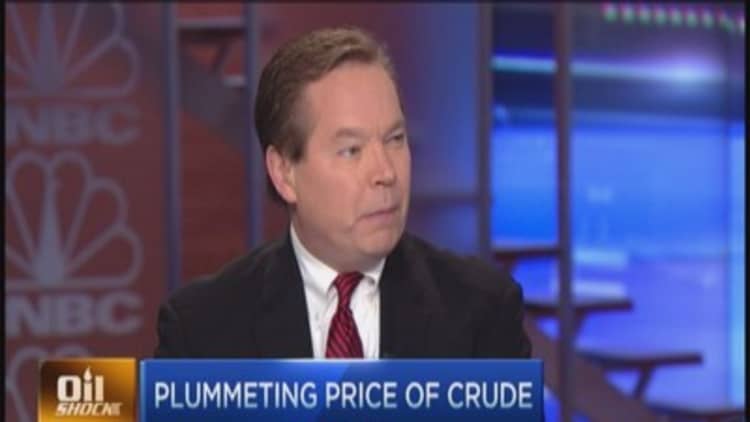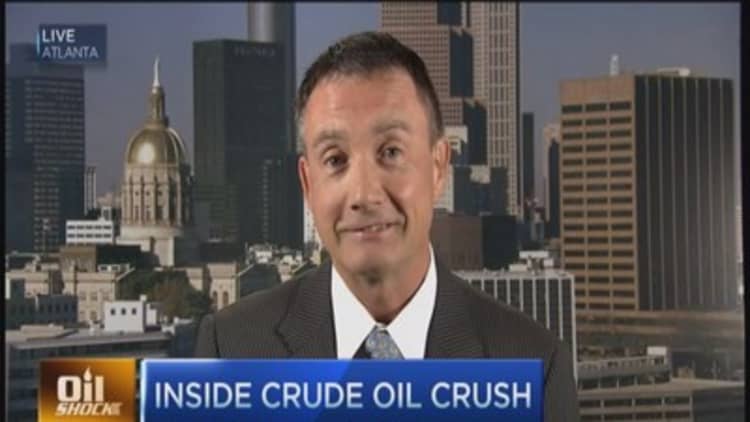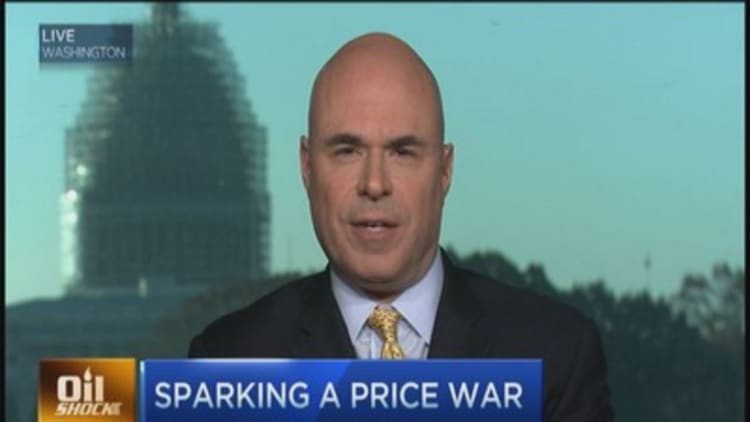
Oil stocks have taken a beating along with crude prices, but companies that run on energy have taken the Dow Jones Transportation Average to new highs.
"You saw the big [oil] integrators get hit last week. They're going to continue to get hit," John Kilduff, founding partner of Again Capital, told CNBC on Monday. He said he won't touch that sector with a "10-foot pole right now."

On the flipside, Donald Broughton, analyst at Avondale Partners, said on "Squawk Box" that transportation companies are benefiting from cheaper oil and gas prices.
"This is the first industrial-led recovery since 1961," said Broughton. "I like American-based companies doing business here at the epicenter of the big [fracking] splash."

But the fracking revolution in the Bakken region of North Dakota and Montana that has spurred growth in U.S. oil production in recent years may be at risk if crude prices continue to fall.
"The economics in the Bakken are now hitting those critical thresholds where these wells are uneconomic. And you're likely to see production fall [eventually]," said Kurt Hallead, co-head of energy research at RBC Capital Markets.
"We've all sharpened our pencils now as far as break-even for shale. It's as low as $40 a barrel here," Kilduff said.
In early trading Monday, WTI crude in the U.S. was trading around $65 a barrel, around a five-year low, after OPEC on Thursday decided to maintain its production levels.
Read MoreOil hits five-year low, floor unsure
The market should have seen the oil plunge coming, Kilduff said. "We hit the tipping point at about mid-year where U.S. Gulf Coast storage of oil was almost full and Nigeria as a country had upwards of 30 to 40 supertankers full of oil with nowhere go."
He added that the oversupply will be most pronounced early next year, when oil could hit "that $40 or even that $35 level."
"It's the first supply shock that OPEC has had to face to 1997," said Hallead, who also sees more near-term pain but said prices could recover in five years to the "$80 to $100 range."

Kevin Book, head of research at Washington, D.C.-based ClearView Energy Partners, also believes the price of oil should be higher in the long run, at about $75 and $90. He said crude prices should be between 2½ and 3½ times the cost of finding and development, which is about $25 a barrel.
Read MoreCan oil fall all the way to $40?
The reasons that prices may not rebound as quickly as they did in the past, he argued, are twofold. "Our discretionary use of oil in the OECD countries is not what it used to be ... because we've got more efficient cars and infrastructure." Members of the Organization for Economic Co-operation and Development include the U.S., Canada and Mexico, many European countries and Japan.
"In non-OECD countries, like China especially, demand growth is really closely correlated to GDP growth. And that's the big dog here," Book said. "If you have GDP slowing down in China, then demand doesn't respond necessarily at these lower prices quite as much as you might expect, the gap stays open longer.
It's not all doom and gloom for oil companies, offered Kilduff. "The only saving grace for Shell and Exxon to a degree is the refining margins are holding up beautifully because there's still sufficient demand for the diesel fuel they make. That's the only aspect of their portfolios that are going to do well."


